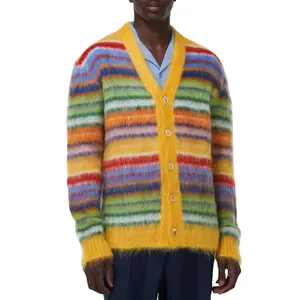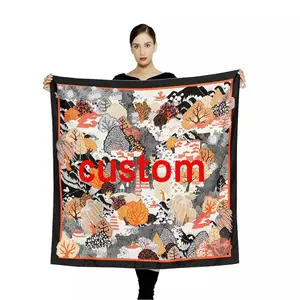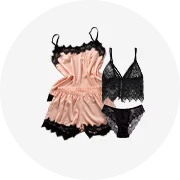Popular in your industry



























































Related Searches:



































































































































Top categories
About nurse uniform colours
Selecting the right colors and fabrics for nurse uniforms is more than a matter of style—it's a strategic decision that impacts the dynamics of healthcare environments. From the calming influence of certain hues to the practicality of maintenance and stain concealment, every color choice carries weight in the bustling corridors of medical facilities. This guide delves into the functional significance of color in nurse attire, the psychological effects on patient care, and the practical considerations of fabric maintenance. As we explore the vast selection available, we'll uncover how the right combination of fabric and color not only adheres to hospital standards but also supports the well-being of staff and patients alike.
The Importance of Color in Nurse Uniforms
The color of nurse uniforms goes beyond aesthetic appeal, serving a functional purpose in healthcare settings. Different hues can signify various roles within a facility, aiding in quick identification of staff members. For instance, certain shades may be designated for different nursing positions, allowing for immediate recognition by colleagues and patients alike. Moreover, color choice is not merely about compliance with dress codes; it's also about the psychological impact and practicality. Some colors are known to be soothing, which can be particularly beneficial in patient care environments where reducing anxiety is crucial. Additionally, the ease of maintenance and the ability to conceal stains are practical considerations that influence color selection. Lighter colors might be preferred for their calming effect, while darker tones are often chosen for their stain-hiding capabilities and the sense of authority they convey.
Color coding in nurse uniforms also plays a crucial role in the dynamics of patient interaction. Lighter shades are typically worn by nurses to differentiate them from doctors and to present a less intimidating, more comforting presence to patients. On the other hand, surgeons might opt for green scrubs, a color that reduces eye strain during procedures and is associated with the surgical profession. The functionality of uniform colors extends to their visual ergonomics, as certain colors can minimize visual fatigue for healthcare professionals during long shifts.
Understanding Fabric Choices
The selection of nurse uniform fabrics encompasses a variety of materials designed to meet the diverse needs of medical professionals. Options include gabardine, a durable, tightly woven fabric, and minimatt, known for its smooth texture. Nonwoven fabrics are also available, offering a stretchable quality for enhanced comfort. Recycled polyester spandex blends cater to environmentally conscious buyers seeking sustainable options without compromising on flexibility.
For those prioritizing comfort and durability, poly-cotton twills are a popular choice, providing a balance between the softness of cotton and the strength of polyester. Fabrics like French Terry offer a knit construction, which allows for breathability and ease of movement. Medical professionals can also find specialized fabrics with performance features such as antimicrobial properties, anti-wrinkle, and breathable weaves, which are essential for long shifts and various medical environments.
The range includes materials that are resistant to chlorine bleaching, ensuring longevity and ease of maintenance. The selection of twill and drill fabrics, often in a polyester-cotton blend, offers a structured yet comfortable fit. For those in search of elasticity, polyester rayon spandex fabrics provide four-way stretch, accommodating the rigorous activities of nursing staff. With an array of colors and patterns, these fabrics allow for customization in line with hospital standards or personal preferences.
Functionality Meets Fashion: Selecting the Right Colors
Nurses often have the flexibility to select their scrub colors when the dress code does not mandate specific shades. This choice allows them to express their personality or adhere to the professional aesthetic of classic colors like light blue or hunter green. The decision can reflect their professional role, with some nurses opting for colors that convey a sense of expertise and training. Additionally, nurses can mix and match colors, pairing favorite scrub pants with a complementary or patterned scrub top. Popular combinations include red with black, gray with blue, and purple with white, often accented with printed scrub caps or patterned jackets. This blend of functionality and fashion in choosing scrub colors enables nurses to feel great while presenting a professional image during their shifts.
Color Psychology and Patient Interaction
The transition from traditional white to a spectrum of colors in medical uniforms is more than a fashion statement; it's deeply rooted in color psychology. Colors can significantly influence perceptions and emotions, impacting both patients and healthcare professionals. For instance, warm hues like purple, green, and blue are not only soothing but also foster a sense of trust and security, which can be particularly beneficial in clinical settings. These colors are associated with healing and can help patients feel more at ease.
A study underscores the importance of color choice in medical attire. A majority of participants favored solid navy scrubs, citing them as the most professional, and reported a boost in confidence in their healthcare providers based on uniform color. Additionally, the choice of green for surgical scrubs is strategic; it contrasts with red, helping to reduce visual fatigue for surgeons and potentially minimizing errors. This interplay of color psychology is crucial not only for patient comfort but also for the efficiency and well-being of medical staff.
Durability and Maintenance: Colorfastness in Fabrics
Understanding the durability and maintenance of fabrics is crucial when selecting nurse uniforms. Color fastness plays a significant role in this aspect, as it determines how well a fabric retains its color under various conditions such as washing, exposure to sunlight, and daily wear. The importance of color fastness cannot be overstated, especially in a healthcare setting where uniforms undergo frequent laundering.
Color fastness is the resistance of a fabric's color to fade or bleed under stressors like washing or sunlight. For nurse uniforms, it's essential to choose fabrics that maintain their color after repeated cleaning cycles. This ensures that uniforms remain professional in appearance and that colors do not transfer onto other garments or surfaces, which is particularly important in the healthcare environment.
Factors affecting color fastness include the quality of the dyeing process, the nature of the dyes used, and the material of the fabric itself. When selecting nurse uniforms, it's important to consider these factors to ensure that the chosen fabrics will stand up to the rigors of daily use while maintaining their color integrity. This not only contributes to the longevity of the uniforms but also supports a positive brand image for healthcare institutions.
Navigating for Best Material and Color Options
When selecting nurse uniforms, the vast array of color options offers an opportunity to find the perfect hue that meets both aesthetic and professional standards. The assortment includes traditional whites, which convey cleanliness and simplicity, as well as a spectrum of other colors. Each color option can be found in various fabric blends, catering to different preferences and requirements.
The materials used for these uniforms range from cotton blends to advanced synthetic fibers, which provide durability and comfort. The choice of color in nurse uniforms is not just a matter of personal preference but also functionality. Lighter colors tend to hide wear but may require more maintenance, while darker hues are more forgiving with stains and are often chosen for their practicality.
The process of finding uniforms with specific color attributes is simplified by allowing users to filter their search according to color, material, and other features. This ensures that buyers can easily navigate through the options to find uniforms that are not only visually appealing but also made from materials that offer colorfastness and ease of maintenance.
In conclusion, a comprehensive selection of nurse uniforms in various colors and materials is provided, enabling buyers to make informed decisions based on the demands of the healthcare environment and the well-being of staff and patients alike.
Advantages of Choosing the Right Colors for Nurse Uniforms
Color-coded scrubs offer several advantages for medical professionals. By adopting a single color for a department, the process of selecting uniforms becomes straightforward, eliminating the need to choose from an array of colors or patterns. This simplicity can lead to significant savings, as there's no need to frequently update a wardrobe for seasonal changes or special occasions.
Moreover, the convenience of color-coded uniforms extends beyond financial benefits. It saves time during daily preparations, allowing medical staff to quickly select their attire without the hassle of decision-making. This can be particularly beneficial when time is of the essence and the focus should be on patient care rather than wardrobe choices.
In addition to personal convenience, color-coded uniforms enhance clarity within the hospital environment. They help patients and visitors identify medical personnel and their respective departments more easily, contributing to a more efficient and less confusing healthcare experience. This clear distinction can improve interactions and streamline the process of seeking assistance within a medical facility.
Conclusion
In the intricate world of healthcare, the colors and materials of nurse uniforms play a pivotal role in the functionality and efficiency of medical services. The strategic use of color coding simplifies identification, enhances professional appearance, and leverages color psychology to benefit patient interactions. An extensive range of fabrics offers medical professionals the ability to choose uniforms that are not only aesthetically pleasing but also durable, comfortable, and easy to maintain. The user-friendly navigation allows for a seamless selection process, ensuring that every nurse can find the perfect balance between fashion and function. Ultimately, the right choice in uniform color and material can lead to a harmonious healthcare setting, where the focus remains on providing top-notch patient care with confidence and ease.






































































